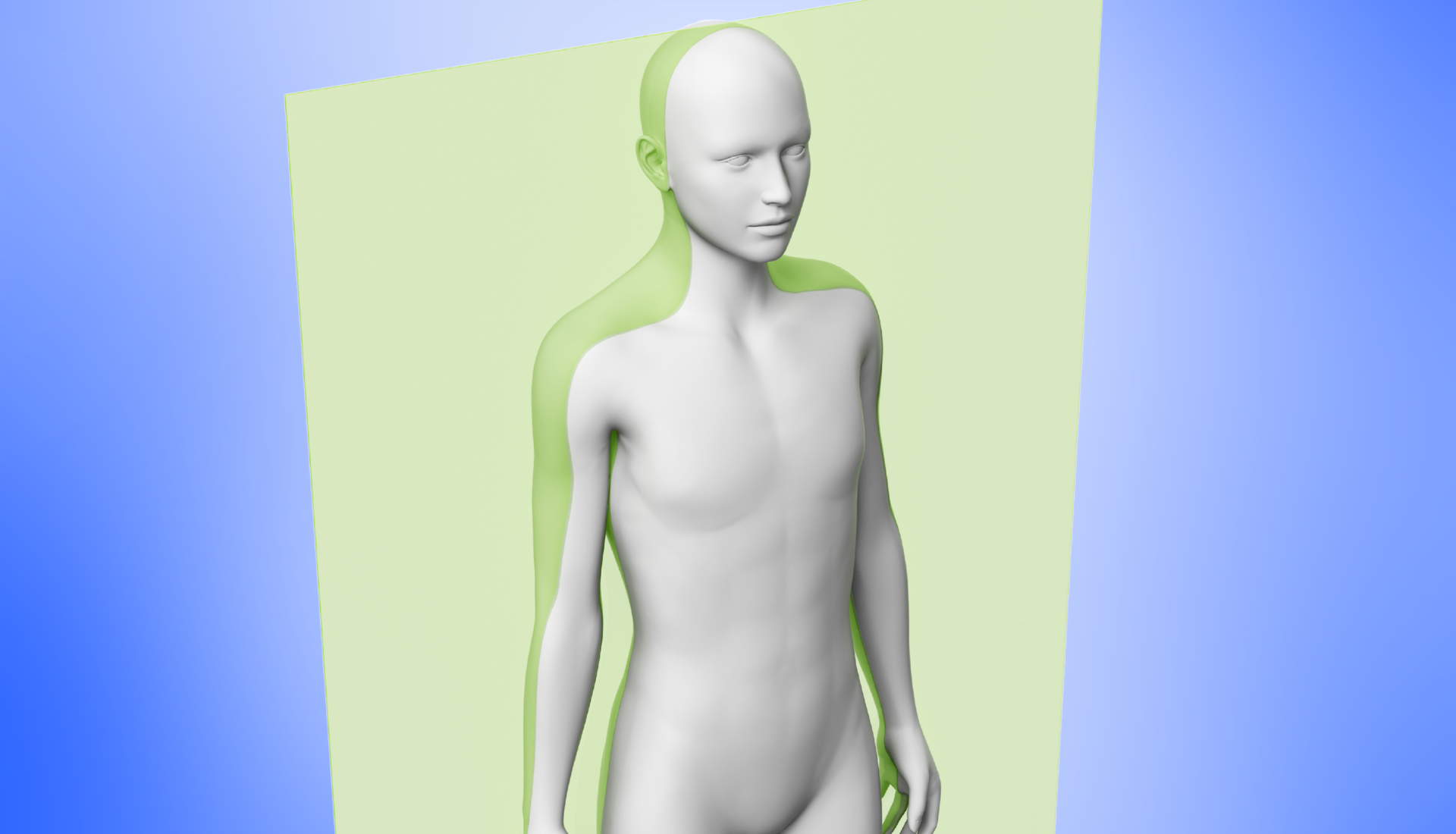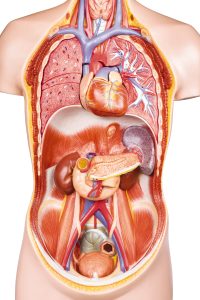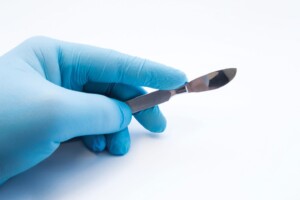This infographic helps students understand anatomical planes and directional terms in context. It shows the body cavities and identifies organs within the abdominal quadrants. You can use it as a support resource in and out of the classroom.
Anatomical Planes
Anatomical planes divide the body into sections to describe the location of structures as well as anatomical motion. Our infographic illustrates these common planes:
- Sagittal plane (midsagittal): Vertical plane that divides the body into left and right halves.
- Coronal plane (frontal): Divides the body into anterior (front) and posterior (back) sections.
- Transverse plane (horizontal): Bisects the body horizontally, dividing it into superior (upper) and inferior (lower) parts.
These vertical and horizontal planes help situate the directional terms proximal, distal, medial, and lateral.
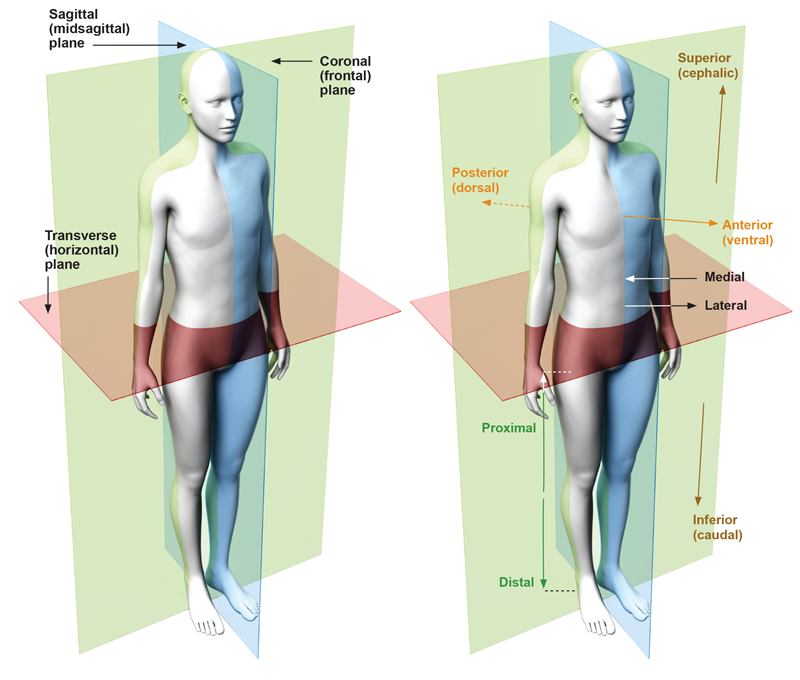
Body Cavities
Body cavities house the internal organs. Major cavities include the:
- Dorsal body cavity: Includes the cranial and vertebral (spinal) cavities.
- Ventral body cavity: Subdivided into the thoracic, abdominal, and pelvic cavities.
The infographic also shows the four abdominal quadrants: right upper, left upper, right lower, left lower. Understanding the quadrants and the related organs helps healthcare workers locate and treat abdominal issues.
Abdominal Quadrants
The infographic shows how the abdomen can be divided into four abdominal quadrants:
- Right upper quadrant (RU): Includes the liver, gallbladder, and right kidney.
- Left upper quadrant (LU): Contains the stomach, pancreas, and left kidney.
- Right lower quadrant (RL): Includes the appendix, right reproductive organs, and potions of the small and large intestines.
- Left lower quadrant (LL): Contains the left reproductive organs and potions of the small and large intestines.
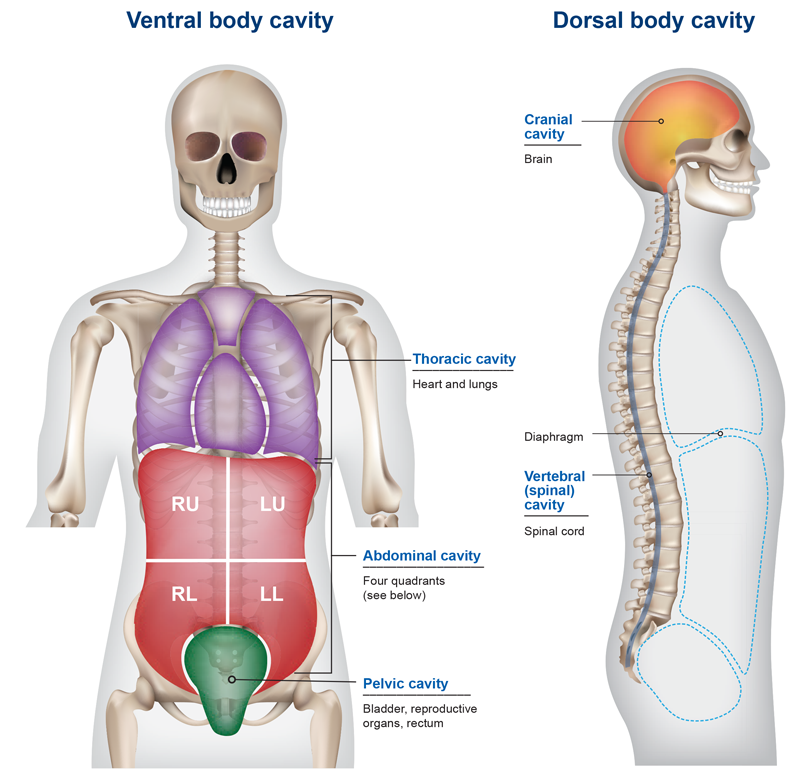
Explore more of our free supplemental resources for instructors and lab managers today.
Related Content
Anatomy and Physiology: Human Organs
Anatomy and Physiology: Human Organs? Take a deeper dive into...
Read MoreTrickiest Anatomy and Physiology Lab Techniques
3 Explainer Videos One of the reasons anatomy and physiology...
Read MoreAbout The Author
Carolina Staff
Carolina is teamed with teachers and continually provides valuable resources–articles, activities, and how-to videos–to help teachers in their classroom.

